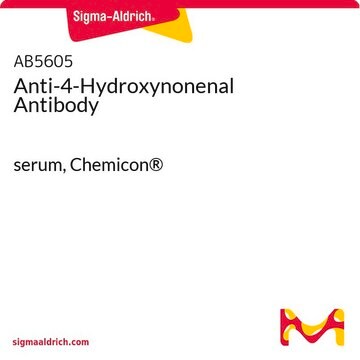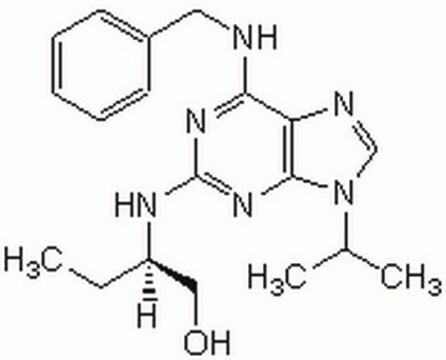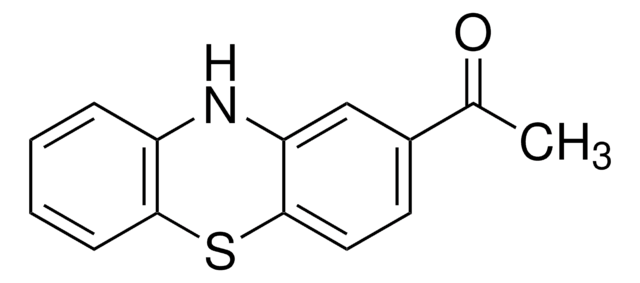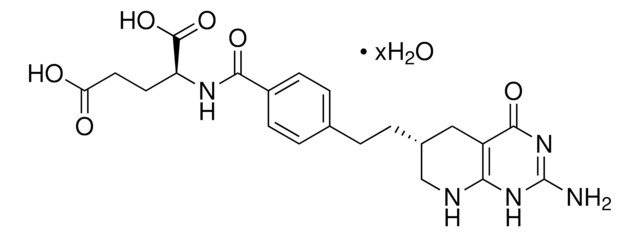S7150
OxyBlot Protein Oxidation Detection Kit
The OxyBlot Protein Oxidation Detection Kit provides the reagents to perform the immunoblot detection of carbonyl groups introduced into proteins by oxidative reactions with ozone or oxides of nitrogen or by metal catalyzed oxidation.
동의어(들):
OxyBlot assay, Protein oxidation kit
로그인조직 및 계약 가격 보기
모든 사진(1)
About This Item
UNSPSC 코드:
12161503
eCl@ss:
32161000
NACRES:
NA.84
추천 제품
일반 설명
Oxidative modification of proteins by oxygen free radicals and other reactive species occurs in physiologic and pathologic processes. As a consequence of the modification, carbonyl groups are introduced into protein side chains by a site-specific mechanism. The OxyBlot Kit provides reagents for simple and sensitive immunodetection of these carbonyl groups, which is a hallmark of the oxidation status of proteins.
애플리케이션
Preparation of Cell Lysate
1. Wash adherent cells twice in the dish or flask with ice-cold PBS and drain off PBS. Wash non-adherent cells in PBS and centrifuge at 800 to 1000 rpm in a table-top centrifuge for 5 minutes to pellet the cells.
2. Add ice-cold RIPA buffer to cells (1 ml per 107 cells/100 mm dish/150 cm2 flask; 0.5 ml per 5 x 106 cells/60 mm dish/75 cm2 flask).
3. Scrape adherent cells off the dish or flask with either a rubber policeman or a plastic cell scraper that has been cooled in ice-cold distilled water. Transfer the cell suspension into a centrifuge tube. Gently rock the suspension on either a rocker or an orbital shaker in the cold room for 15 minutes to lyse cells.
4. Centrifuge the lysate at 14,000 x g in a precooled centrifuge for 15 minutes. Immediately transfer the supernatant to a fresh centrifuge tube and discard the pellet.
5. Dilute the cell lysate at least 1 : 10 before determining the protein concentration because of the interference of the detergents in the lysis buffer with the Coomassie-based reagent. At this step, the sample can be divided into aliquots and stored at -20¡C for up to a month.
TIP: When working with large volumes of non-adherent cells, the cells may not be cooled quickly enough to maintain the activity of the protein being studied. In this case, pour the cell suspension into a mixture of an equal mass of 2 x PBS and ice, then collect the cells by centrifugation and perform the lysis as described above.
RIPA lysis buffer:
Catalog number 20-188
http://www.millipore.com/catalogue/item/20-188
Reducing agent is very important for preventing oxidation:
The protein lysate may be prepared using a variety of protocols. Most standard buffers such as RIPA and Triton are also suitable. It is recommended that a reducing agent be added to the lysis buffer to prevent the oxidation of proteins that may occur after cell lysis. Lysis buffer containing either 1-2% 2-mercaptoethanol or 50 mM DTT sufficiently inhibits this oxidation, but has no adverse effect on the derivatization reaction in the OxyBlot protocol. Purified protein samples are also suitable for analysis with the OxyBlot Kit.
For general information about protein extraction, please check this link.
http://www.millipore.com/immunodetection/id3/proteinextraction
1. Wash adherent cells twice in the dish or flask with ice-cold PBS and drain off PBS. Wash non-adherent cells in PBS and centrifuge at 800 to 1000 rpm in a table-top centrifuge for 5 minutes to pellet the cells.
2. Add ice-cold RIPA buffer to cells (1 ml per 107 cells/100 mm dish/150 cm2 flask; 0.5 ml per 5 x 106 cells/60 mm dish/75 cm2 flask).
3. Scrape adherent cells off the dish or flask with either a rubber policeman or a plastic cell scraper that has been cooled in ice-cold distilled water. Transfer the cell suspension into a centrifuge tube. Gently rock the suspension on either a rocker or an orbital shaker in the cold room for 15 minutes to lyse cells.
4. Centrifuge the lysate at 14,000 x g in a precooled centrifuge for 15 minutes. Immediately transfer the supernatant to a fresh centrifuge tube and discard the pellet.
5. Dilute the cell lysate at least 1 : 10 before determining the protein concentration because of the interference of the detergents in the lysis buffer with the Coomassie-based reagent. At this step, the sample can be divided into aliquots and stored at -20¡C for up to a month.
TIP: When working with large volumes of non-adherent cells, the cells may not be cooled quickly enough to maintain the activity of the protein being studied. In this case, pour the cell suspension into a mixture of an equal mass of 2 x PBS and ice, then collect the cells by centrifugation and perform the lysis as described above.
RIPA lysis buffer:
Catalog number 20-188
http://www.millipore.com/catalogue/item/20-188
Reducing agent is very important for preventing oxidation:
The protein lysate may be prepared using a variety of protocols. Most standard buffers such as RIPA and Triton are also suitable. It is recommended that a reducing agent be added to the lysis buffer to prevent the oxidation of proteins that may occur after cell lysis. Lysis buffer containing either 1-2% 2-mercaptoethanol or 50 mM DTT sufficiently inhibits this oxidation, but has no adverse effect on the derivatization reaction in the OxyBlot protocol. Purified protein samples are also suitable for analysis with the OxyBlot Kit.
For general information about protein extraction, please check this link.
http://www.millipore.com/immunodetection/id3/proteinextraction
저장 및 안정성
Store the protein standard (component 90450) at -25° to -15°C upon receipt. Store all other components at 2°C to 8°C.
법적 정보
CHEMICON is a registered trademark of Merck KGaA, Darmstadt, Germany
면책조항
Unless otherwise stated in our catalog or other company documentation accompanying the product(s), our products are intended for research use only and are not to be used for any other purpose, which includes but is not limited to, unauthorized commercial uses, in vitro diagnostic uses, ex vivo or in vivo therapeutic uses or any type of consumption or application to humans or animals.
신호어
Warning
유해 및 위험 성명서
Hazard Classifications
Met. Corr. 1 - Skin Sens. 1
Storage Class Code
8A - Combustible corrosive hazardous materials
시험 성적서(COA)
제품의 로트/배치 번호를 입력하여 시험 성적서(COA)을 검색하십시오. 로트 및 배치 번호는 제품 라벨에 있는 ‘로트’ 또는 ‘배치’라는 용어 뒤에서 찾을 수 있습니다.
Plasma infusions into porcine cerebral white matter induce early edema, oxidative stress, pro-inflammatory cytokine gene expression and DNA fragmentation: implications for white matter injury with increased blood-brain-barrier permeability.
Wagner, Kenneth R, et al.
Current neurovascular research, 2, 149-155 (2005)
Ketone bodies stimulate chaperone-mediated autophagy.
Finn, Patrick F and Dice, J Fred
The Journal of Biological Chemistry, 280, 25864-25870 (2005)
Gamma-glutamylcysteine ethyl ester protection of proteins from Abeta(1-42)-mediated oxidative stress in neuronal cell culture: a proteomics approach
Boyd-Kimball, D. et al.
Journal of Neuroscience Research, 79(5), 707-713 (2005)
Proteasome inhibition by MG-132 induces apoptotic cell death and mitochondrial dysfunction in cultured rat brain oligodendrocytes but not in astrocytes.
Olaf Goldbaum, Grit Vollmer, Christiane Richter-Landsberg
Glia null
Oxidative stress, induced by 6-hydroxydopamine, reduces proteasome activities in PC12 cells: implications for the pathogenesis of Parkinson's disease
Elkon, H. et al.
Journal of Molecular Neuroscience, 24(3), 387-400 (2004)
자사의 과학자팀은 생명 과학, 재료 과학, 화학 합성, 크로마토그래피, 분석 및 기타 많은 영역을 포함한 모든 과학 분야에 경험이 있습니다..
고객지원팀으로 연락바랍니다.










